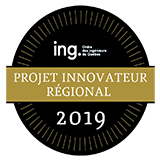Tunnel water management 300 meters under the Hudson River, New York

Challenges
Construction of a tunnel under the Hudson river presents significant water management challenges. Firstly, the 300 meters depth of the river requires the use of high-pressure pumps, highly sensitive to water charged with abrasive solids.
Flow rate and peak flow may vary considerably from 75 m³/hour to 1200 m³/hour during peak periods.
In operation, the tunnel boring machine can generate large quantities of solids du to drilling and injection activities.
Given the limited underground space available, it results in significant excavation costs to accommodate the water treatment system.
The available power to supply pumps is limited and any electrical system is regulated by explosion-proof rules.
The sludge disposal costs on ground are a key issue.
Outcomes
Design and installation of a complete hybrid water management system which can withstand a variable flow rate from 75 to 1200 m³/hour.
From 0 to 100 m³/hour, water is treated to eliminate 98% of suspended solids. From 100 to 1200m³/hour, the water is pumped directly to the surface as it comes mainly from uncharged underground water.
A 40% reduction of the costs related to initial water management budget and a 65% reduction of sludge quantity to dispose from site.
A 30% reduction in energy consumption of pumps, about 960HP ( 700kw), by the use of the Technojet MH multistage high-efficiency pumps.
Optimization of available space without having to do additional excavation to design the water management system.
This project is intended to provide 50% of the drinking water in New York.